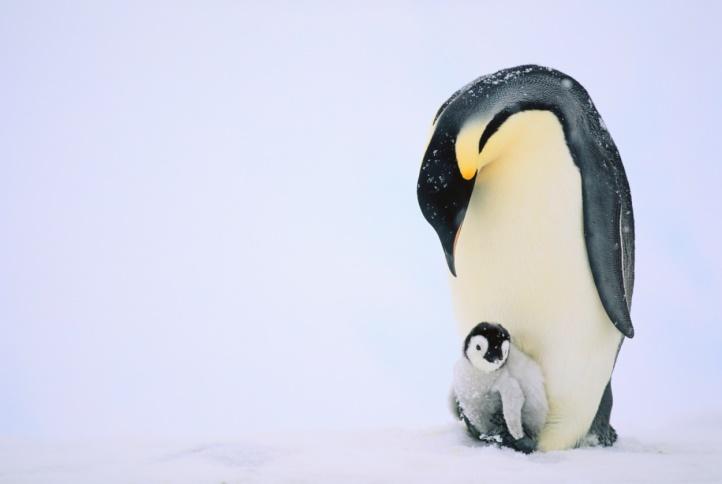
Wimpy emporer penguins have nothing on their ice age brethren (Credit: ThinkStock)
You’ve heard of various giant creatures of ice ages past—wooly mammoths and rhinos, 12-foot bears and sloths, 800-pound saber-toothed tigers. one-ton muscly herbivores and the like. Well, now you can add LeBron James-sized penguins to the mix. Oh yes, evolution went there.
The Giant Penguins of Prehistory
A team of researchers unfortunate enough to have an Antarctica posting at least have something to show for it. They discovered fossil remains of ancient penguins that put the creatures at about 250 pounds and 6-foot-7 in length. That dwarfs the largest species of penguins today, emperor penguins, who waddle around carrying a measly 90 pounds on their 4-foot frames. OK, that’s actually kind of horrific, too—until I just now looked that up, I didn’t realize there currently exist bipedal birds only a foot shorter than I am. That’s some Animal Farm shit right there.
Thriving in Antarctica
This, of course, makes the monster birds of bygone icy eras all the more alarming. The tuxedoed behemoths, dubbed Palaeeudyptes klekowskii, lived about 40 million years ago during a sort of Renaissance period for penguins. One researcher explained that up to 14 different species of this bird lived together along the Antarctic coast. Besides physically lording over their smaller penguin brethren on land, Klekowskiis could probably leverage their size to dive deeper and stay underwater longer. This colossal species may have been able to stay under for about 40 minutes, allowing them more time than the others to collect all the fish needed to sustain their portly size.
Sadly, this clearly wasn’t a winning strategy, as the species went the way of all the other massive creatures of icy bygone eras. (Aka extinct.) They may have had about a 3 million-year run, but in the end, the smaller (though not necessarily nicer) guys won out. Still, that's a real solid performance in the time scale of Earthly species—after all, modern humans have only been around for a couple hundred thousand years. So we salute you, monstrous tuxedoed birds of the past . . . even if we aren't terribly disappointed that your freakishly large selves have kicked the bucket.






